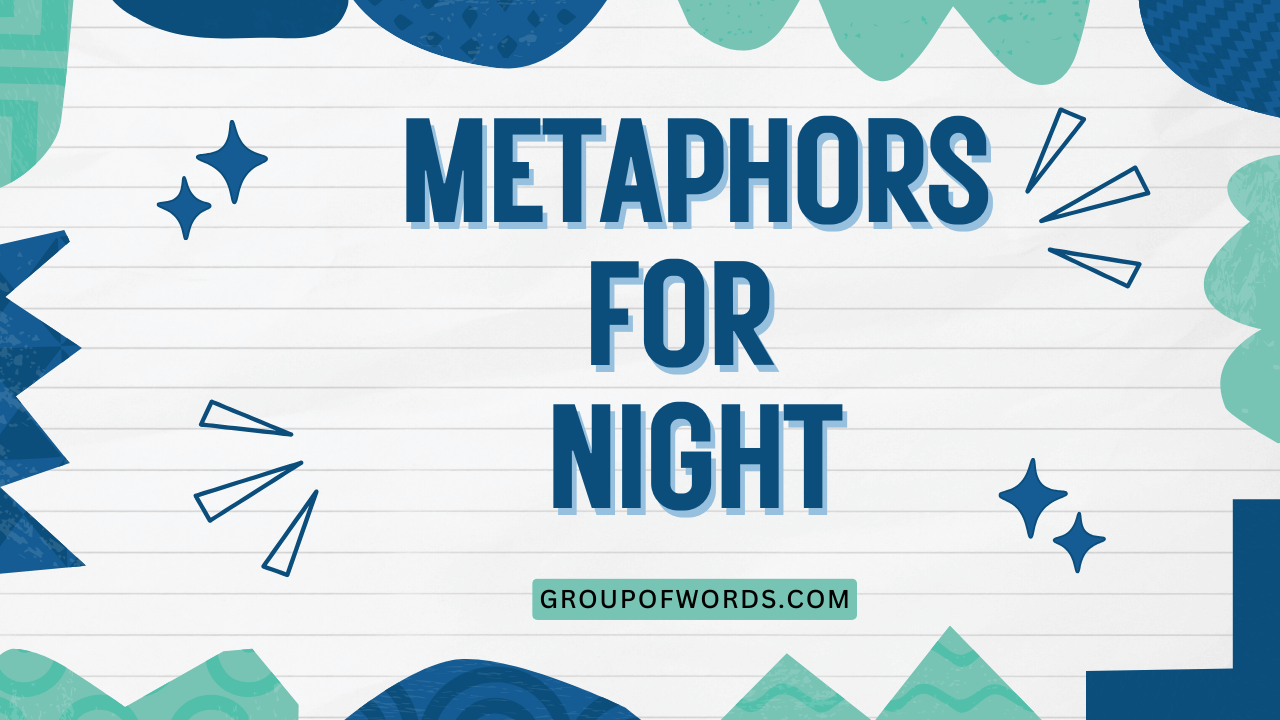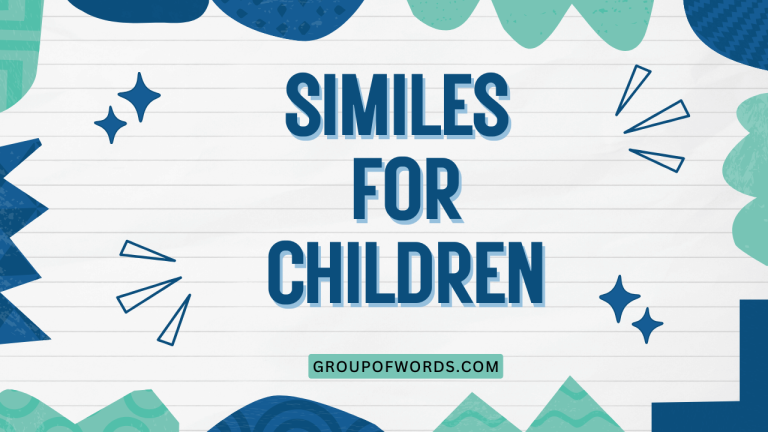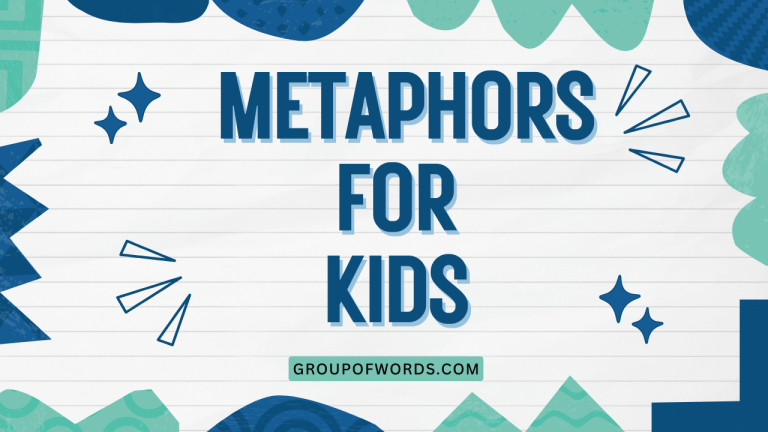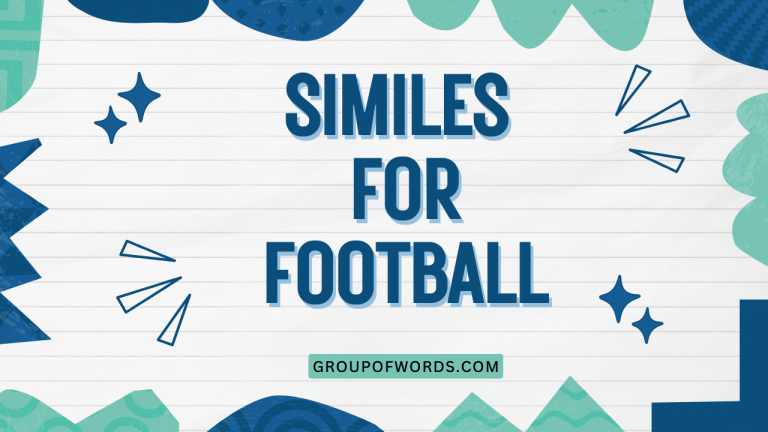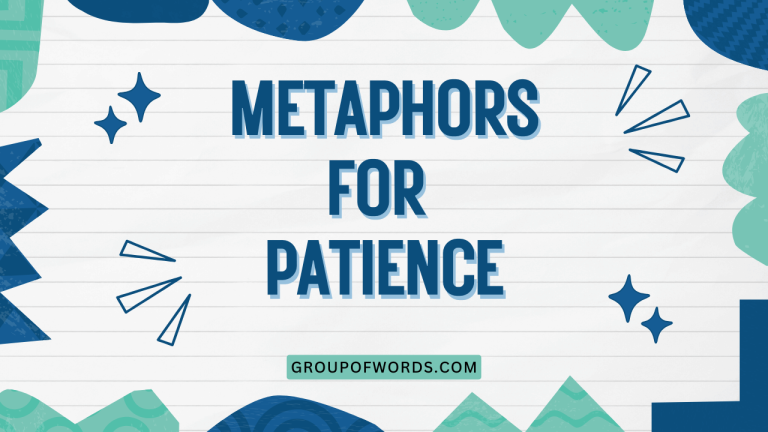Metaphors for Night: A Comprehensive Guide
Night, a time of mystery, rest, and reflection, has captivated human imagination for centuries. As such, it’s a rich source of metaphors in literature, poetry, and everyday language.
Understanding these metaphors not only enhances our appreciation of creative writing but also deepens our understanding of how language works. This article will explore the diverse range of metaphors used to describe night, providing a comprehensive guide for English learners and enthusiasts alike.
Whether you’re a student, writer, or simply curious about language, this exploration of night’s metaphorical representations will prove both insightful and enriching.
This guide will cover the definition of metaphors for night, their structural breakdown, various types, extensive examples, usage rules, common mistakes, practice exercises, advanced topics, and frequently asked questions. By the end of this article, you will have a strong grasp of how metaphors are used to describe night and how to use them effectively in your own writing and speech.
Table of Contents
- Definition of Metaphors for Night
- Structural Breakdown
- Types and Categories of Metaphors for Night
- Examples of Metaphors for Night
- Usage Rules
- Common Mistakes
- Practice Exercises
- Advanced Topics
- FAQ
- Conclusion
Definition of Metaphors for Night
A metaphor is a figure of speech that directly compares two unlike things without using “like” or “as.” Metaphors for night, therefore, are expressions that describe night by associating it with something else that shares similar characteristics or evokes similar feelings. These metaphors can transform night into a person, a place, an object, or even an emotion, enriching our understanding and appreciation of its multifaceted nature.
Metaphors function by transferring qualities from one thing to another, creating a deeper, more vivid image in the reader’s mind. For example, saying “Night is a black cat” doesn’t mean night is literally a feline; rather, it suggests the darkness, silence, and perhaps even the stealthy nature often associated with both.
The context in which a metaphor is used is crucial to its interpretation. The surrounding words, the overall tone of the writing, and the reader’s own experiences all contribute to how a metaphor is understood.
A metaphor for night in a horror story will evoke different feelings than a metaphor for night in a romantic poem.
Structural Breakdown
Metaphors generally consist of two main elements: the tenor and the vehicle. The tenor is the subject being described (in this case, night), and the vehicle is the object or concept used to describe it. The connection between the tenor and the vehicle is the shared characteristic or idea.
For instance, in the metaphor “Night is a velvet curtain,” the tenor is “night,” and the vehicle is “velvet curtain.” The shared characteristic is the darkness and smoothness associated with both. The metaphor works because velvet curtains are typically dark, heavy, and create a sense of enclosure, mirroring the feeling of night.
Understanding this structure allows us to dissect and analyze metaphors more effectively. By identifying the tenor, the vehicle, and the shared characteristic, we can better grasp the meaning and impact of the metaphor.
The power of a metaphor lies in its ability to create a new perspective on something familiar. By using unexpected vehicles, writers can challenge our perceptions and offer fresh insights into the nature of night.
Types and Categories of Metaphors for Night
Metaphors for night can be categorized based on the type of association they create. Here are some common categories:
Night as a Being
This category personifies night, giving it human-like qualities or actions. This can create a sense of intimacy or threat, depending on the specific metaphor.
Night as a Covering
These metaphors describe night as something that envelops or conceals. This often emphasizes the darkness and mystery associated with night.
Night as a Place
This category treats night as a location, often emphasizing its unique characteristics or atmosphere.
Night as a Time
These metaphors focus on the activities or feelings associated with nighttime, such as rest, dreams, or fear.
Night as an Emotion
Here, night is directly linked to a specific emotion, such as sadness, peace, or terror. This can create a powerful and evocative image.
Examples of Metaphors for Night
This section provides a comprehensive list of metaphors for night, categorized by type, to illustrate the diverse ways in which night can be described.
Night as a Being
The following table provides examples of metaphors that personify night, giving it human-like qualities or actions. These metaphors often create a sense of intimacy or threat, depending on the specific image invoked.
| Metaphor | Explanation |
|---|---|
| Night is a watchful guardian. | Implies night is protective and vigilant. |
| Night is a silent observer. | Suggests night is present but unobtrusive. |
| Night is a dark dancer. | Evokes a sense of movement and mystery. |
| Night is a heavy sleeper. | Implies stillness and inactivity. |
| Night is a weeping widow. | Conveys sadness and mourning. |
| Night is a cunning thief. | Suggests danger and stealth. |
| Night is a gentle mother. | Implies comfort and security. |
| Night is a stern father. | Conveys authority and discipline. |
| Night is a wise old man. | Suggests knowledge and experience. |
| Night is a playful child. | Evokes a sense of joy and innocence. |
| Night is a hungry beast. | Implies danger and predation. |
| Night is a patient artist. | Suggests creativity and beauty. |
| Night is a whispering ghost. | Conveys eeriness and mystery. |
| Night is a lonely traveler. | Implies solitude and wandering. |
| Night is a silent judge. | Suggests assessment and consequence. |
| Night is a dark storyteller. | Evokes a sense of narrative and mystery. |
| Night is a heavy sigh. | Conveys relief or resignation. |
| Night is a knowing glance. | Suggests understanding and awareness. |
| Night is a cold embrace. | Implies discomfort and isolation. |
| Night is a sweet lullaby. | Conveys comfort and peace. |
| Night is a dark jester. | Suggests playful trickery. |
| Night is a quiet healer. | Implies rest and recovery. |
| Night is a somber poet. | Evokes reflection and melancholy. |
| Night is an endless dreamer. | Suggests imagination and fantasy. |
| Night is a dark secret keeper. | Implies hidden knowledge and mystery. |
Night as a Covering
The following table provides examples of metaphors that describe night as something that envelops or conceals. These metaphors often emphasize the darkness, mystery, and sometimes even the suffocating nature of night.
| Metaphor | Explanation |
|---|---|
| Night is a velvet blanket. | Implies comfort and warmth. |
| Night is a dark shroud. | Suggests death and mystery. |
| Night is a heavy curtain. | Conveys enclosure and darkness. |
| Night is a black cloak. | Implies concealment and anonymity. |
| Night is a star-studded veil. | Evokes beauty and mystery. |
| Night is a thick fog. | Suggests confusion and disorientation. |
| Night is a dark canvas. | Implies emptiness and potential. |
| Night is a silent wave. | Conveys a sense of overwhelming darkness. |
| Night is a vast ocean. | Suggests depth and mystery. |
| Night is a dark umbrella. | Implies protection and shelter. |
| Night is a soft glove. | Conveys gentleness and comfort. |
| Night is a dark mask. | Suggests hidden identities and secrets. |
| Night is a heavy lid. | Implies suppression and confinement. |
| Night is a dark net. | Conveys entrapment and fear. |
| Night is a black tapestry. | Suggests complexity and artistry. |
| Night is a dark river. | Implies flow and transition. |
| Night is a starless dome. | Conveys vastness and emptiness. |
| Night is a black screen. | Suggests a barrier or division. |
| Night is a heavy coat. | Implies protection from the cold. |
| Night is a dark shield. | Conveys defense and security. |
| Night is a black mirror. | Suggests reflection and introspection. |
| Night is a dark tunnel. | Implies a journey or transition. |
| Night is a star-dusted blanket. | Conveys warmth and beauty. |
| Night is a dark curtain falling. | Suggests finality and closure. |
| Night is a black ocean of dreams. | Implies depth and mystery of dreams. |
Night as a Place
The following table provides examples of metaphors that treat night as a location, emphasizing its unique characteristics or atmosphere. These metaphors can evoke feelings of peace, danger, or mystery, depending on the specific imagery used.
| Metaphor | Explanation |
|---|---|
| Night is a silent city. | Implies emptiness and stillness. |
| Night is a dark forest. | Suggests danger and mystery. |
| Night is a star-filled garden. | Evokes beauty and tranquility. |
| Night is a boundless desert. | Implies emptiness and isolation. |
| Night is a quiet harbor. | Suggests safety and rest. |
| Night is a dark labyrinth. | Conveys confusion and complexity. |
| Night is a hidden sanctuary. | Implies refuge and peace. |
| Night is a star-strewn battlefield. | Suggests conflict and beauty. |
| Night is a silent stage. | Conveys anticipation and drama. |
| Night is a dark classroom. | Implies learning and introspection. |
| Night is a quiet library. | Suggests knowledge and reflection. |
| Night is a star-lit ballroom. | Evokes elegance and romance. |
| Night is a dark prison. | Implies confinement and despair. |
| Night is a silent museum. | Conveys history and stillness. |
| Night is a star-covered meadow. | Suggests peace and beauty. |
| Night is a dark alleyway. | Implies danger and secrecy. |
| Night is a quiet valley. | Conveys tranquility and seclusion. |
| Night is a star-speckled sky. | Evokes vastness and wonder. |
| Night is a dark well. | Suggests depth and mystery. |
| Night is a silent temple. | Implies reverence and peace. |
| Night is a star-dusted road. | Conveys journey and hope. |
| Night is a dark cavern. | Suggests mystery and darkness. |
| Night is a quiet mountain. | Conveys solitude and strength. |
| Night is a star-painted ceiling. | Evokes beauty and wonder. |
| Night is a dark corner of my mind. | Implies hidden thoughts and fears. |
Night as a Time
The following table provides examples of metaphors that focus on the activities or feelings associated with nighttime, such as rest, dreams, or fear. These metaphors often emphasize the psychological or emotional impact of night.
| Metaphor | Explanation |
|---|---|
| Night is a time for dreams. | Implies imagination and fantasy. |
| Night is a time for secrets. | Suggests hidden truths and mysteries. |
| Night is a time for reflection. | Conveys introspection and thought. |
| Night is a time for rest. | Implies peace and rejuvenation. |
| Night is a time for fear. | Suggests danger and anxiety. |
| Night is a time for love. | Conveys intimacy and passion. |
| Night is a time for stories. | Implies imagination and tradition. |
| Night is a time for whispers. | Suggests secrets and intimacy. |
| Night is a time for memories. | Conveys nostalgia and reflection. |
| Night is a time for healing. | Implies recovery and peace. |
| Night is a time for loneliness. | Suggests isolation and sadness. |
| Night is a time for magic. | Conveys wonder and enchantment. |
| Night is a time for shadows. | Implies mystery and uncertainty. |
| Night is a time for stillness. | Suggests peace and tranquility. |
| Night is a time for stars. | Conveys beauty and hope. |
| Night is a time for darkness. | Implies mystery and fear. |
| Night is a time for silence. | Suggests peace and reflection. |
| Night is a time for escape. | Conveys freedom and release. |
| Night is a time for comfort. | Implies warmth and security. |
| Night is a time for contemplation. | Suggests deep thought and analysis. |
| Night is a time for letting go. | Conveys release and acceptance. |
| Night is a time for rebirth. | Implies renewal and fresh starts. |
| Night is a time for hidden truths. | Suggests revelation and discovery. |
| Night is a time for the soul to wander. | Conveys spiritual exploration and freedom. |
| Night is a time when the world holds its breath. | Implies anticipation and stillness. |
Night as an Emotion
The following table provides examples of metaphors where night is directly linked to a specific emotion, such as sadness, peace, or terror. These metaphors can create a powerful and evocative image, directly connecting the feeling of night with a particular emotional state.
| Metaphor | Explanation |
|---|---|
| Night is a heavy sadness. | Implies deep sorrow and grief. |
| Night is a quiet peace. | Suggests tranquility and serenity. |
| Night is a chilling terror. | Conveys fear and dread. |
| Night is a warm comfort. | Implies security and reassurance. |
| Night is a deep loneliness. | Suggests isolation and solitude. |
| Night is a sweet longing. | Conveys desire and nostalgia. |
| Night is a dark despair. | Implies hopelessness and anguish. |
| Night is a quiet hope. | Suggests optimism and faith. |
| Night is a vast emptiness. | Conveys nothingness and void. |
| Night is a gentle relief. | Implies comfort and release. |
| Night is a cold indifference. | Suggests apathy and detachment. |
| Night is a burning passion. | Conveys intense desire and love. |
| Night is a creeping anxiety. | Implies worry and unease. |
| Night is a soothing calm. | Suggests peace and tranquility. |
| Night is a bitter regret. | Conveys sorrow and remorse. |
| Night is a silent wonder. | Implies awe and amazement. |
| Night is a hidden fear. | Suggests suppressed anxiety and dread. |
| Night is a gentle acceptance. | Conveys peace and understanding. |
| Night is a heavy burden. | Implies stress and responsibility. |
| Night is a silent understanding. | Suggests deep empathy and connection. |
| Night is a vast unknown. | Implies mystery and uncertainty. |
| Night is a comfortable familiarity. | Conveys ease and belonging. |
| Night is an unsettling quiet. | Suggests unease and anticipation. |
| Night is a profound mystery. | Conveys intrigue and fascination. |
| Night is a reflective melancholy. | Implies thoughtful sadness and contemplation. |
Usage Rules
When using metaphors for night, it’s essential to consider the overall tone and context of your writing. A metaphor should enhance the meaning, not confuse the reader.
Here are some guidelines:
- Clarity: Ensure the connection between the tenor and the vehicle is clear and understandable. Avoid using obscure or overly complex metaphors.
- Consistency: Maintain consistency in your metaphorical language. Mixing metaphors can weaken the impact of your writing.
- Originality: Strive for originality. Overused metaphors can become clichés and lose their impact.
- Appropriateness: Choose metaphors that are appropriate for the subject matter and the intended audience.
- Context: Consider the context in which the metaphor is used. The surrounding words and the overall tone of the writing will influence how the metaphor is interpreted.
A good metaphor should resonate with the reader, creating a vivid image or evoking a strong emotion. It should add depth and nuance to your writing, making it more engaging and memorable.
Common Mistakes
Using metaphors effectively requires practice and attention to detail. Here are some common mistakes to avoid:
| Mistake | Correct Example | Incorrect Example |
|---|---|---|
| Mixing metaphors | Night is a dark curtain, concealing the world. | Night is a dark curtain, but it’s also a raging fire. |
| Using clichés | Night is a silent guardian, watching over the city. | Night is as black as coal. |
| Creating confusing metaphors | Night is a velvet blanket, offering comfort. | Night is a quantum particle, oscillating wildly. |
| Using inappropriate metaphors | Night is a peaceful harbor, where dreams set sail. | Night is a garbage truck, filled with despair. |
| Overusing metaphors | The city slept, shrouded in the night’s embrace. | The city slept, shrouded in the night’s embrace, which was a dark ocean of dreams, filled with silent whispers and hidden fears. |
By being aware of these common mistakes, you can avoid them and use metaphors more effectively in your writing.
Practice Exercises
Test your understanding of metaphors for night with these exercises.
Exercise 1: Identifying Metaphors
Identify the metaphors for night in the following sentences:
| Question | Answer |
|---|---|
| 1. Night is a dark ocean, full of hidden depths. | Night is a dark ocean. |
| 2. The stars twinkled like diamonds in the night sky. | No metaphor for night. (Simile for stars) |
| 3. Night is a silent observer, watching over the sleeping world. | Night is a silent observer. |
| 4. The moon shone brightly, illuminating the darkness. | No metaphor for night. |
| 5. Night is a heavy blanket, smothering the city. | Night is a heavy blanket. |
| 6. The wind howled through the night, a mournful cry. | No metaphor for night. |
| 7. Night is a time for dreams, a portal to another world. | Night is a time for dreams, a portal to another world. |
| 8. Shadows danced in the night, creating eerie shapes. | No metaphor for night. |
| 9. Night is a dark canvas, waiting for the stars to paint their masterpiece. | Night is a dark canvas. |
| 10. The crickets chirped in the night, a soothing melody. | No metaphor for night. |
Exercise 2: Creating Metaphors
Create your own metaphors for night, using the following prompts:
| Prompt | Possible Answer |
|---|---|
| 1. Night as a feeling. | Night is a quiet peace. |
| 2. Night as a place. | Night is a silent city. |
| 3. Night as a person. | Night is a watchful guardian. |
| 4. Night as a covering. | Night is a velvet blanket. |
| 5. Night as a time. | Night is a time for secrets. |
| 6. Night as something dangerous. | Night is a hungry beast. |
| 7. Night as something comforting. | Night is a gentle mother. |
| 8. Night as something mysterious. | Night is a hidden sanctuary. |
| 9. Night as something beautiful. | Night is a star-filled garden. |
| 10. Night as something lonely. | Night is a boundless desert. |
Exercise 3: Correcting Mistakes
Identify and correct the mistakes in the following sentences:
| Incorrect Sentence | Corrected Sentence |
|---|---|
| 1. Night is a dark curtain, but it’s also a bright light. | Night is a dark curtain, concealing the world. |
| 2. Night is as black as coal, and it’s also a raging fire. | Night is a dark mystery, full of hidden shadows. |
| 3. Night is a quantum particle, offering comfort and peace. | Night is a velvet blanket, offering comfort and peace. |
| 4. Night is a garbage truck, where dreams set sail. | Night is a peaceful harbor, where dreams set sail. |
| 5. The city slept, shrouded in the night’s embrace, which was a dark ocean of dreams, filled with silent whispers and hidden fears and also a quantum particle. | The city slept, shrouded in the night’s dark embrace. |
| 6. Night is a time for secrets, but it’s also a time for loud noises. | Night is a time for secrets, hidden from the world. |
| 7. Night is as dark as space, and it’s also as bright as the sun. | Night is a vast emptiness, full of silent wonders. |
| 8. Night is a boiling cauldron, offering comfort and peace. | Night is a warm embrace, offering comfort and peace. |
| 9. Night is a speeding train, where dreams set sail. | Night is a quiet harbor, where dreams set sail. |
| 10. The world slept, covered in the night’s shadows, which were also quantum particles and bright lights. | The world slept, covered in the night’s deep shadows. |
Advanced Topics
For advanced learners, consider exploring the use of extended metaphors, where a single metaphor is developed throughout an entire poem or story. Also, investigate the use of symbolism in conjunction with metaphors for night, where night itself represents a larger concept such as death, the unknown, or the subconscious.
Another advanced topic is the study of cultural differences in the perception of night and how these differences are reflected in metaphorical language. For example, some cultures view night as a time of danger and fear, while others see it as a time of peace and reflection.
These differing perspectives can lead to very different metaphors for night.
Delve into the works of famous poets and writers who have masterfully used metaphors for night, such as Shakespeare, Wordsworth, and Poe, to analyze their techniques and gain inspiration for your own writing.
FAQ
Here are some frequently asked questions about metaphors for night:
- What is the difference between a metaphor and a simile?
A metaphor directly compares two unlike things without using “like” or “as,” while a simile uses “like” or “as” to make the comparison. For example, “Night is a dark ocean” is a metaphor, while “Night is like a dark ocean” is a simile.
- Why are metaphors used in writing?
Metaphors are used to create vivid images, evoke emotions, and add depth and nuance to writing. They can make writing more engaging, memorable, and thought-provoking.
- How can I improve my ability to create metaphors?
Practice, observation, and reading widely are key to improving your ability to create metaphors. Pay attention to the world around you, look for connections between seemingly unrelated things, and experiment with different ways of expressing your ideas.
- Are some metaphors better than others?
Yes, some metaphors are more effective than others. A good metaphor should be clear, original, appropriate for the context, and resonate with the reader. Overused or confusing metaphors should be avoided.
- Can a metaphor be too complex?
Yes, a metaphor can be too complex if it is difficult to understand or if it distracts from the main point of the writing. It’s important to strike a balance between creativity and clarity.
- How do cultural differences affect the use of metaphors for night?
Cultural differences can significantly impact the metaphors used for night. Different cultures have varying perceptions of night, which can influence the emotions and associations connected to it. For example, some cultures may view night as a time of danger, while others see it as a time of peace and reflection.
- What are some common themes associated with metaphors for night?
Common themes include darkness, mystery, peace, fear, dreams, secrets, and reflection. The specific theme will depend on the context and the intended effect of the metaphor.
- How can I analyze the effectiveness of a metaphor for night?
Consider the clarity, originality, appropriateness, and impact of the metaphor. Does it create a vivid image? Does it evoke a strong emotion? Does it add depth and nuance to the writing? If the answer to these questions is yes, then the metaphor is likely effective.
Conclusion
Metaphors for night offer a powerful tool for enriching our language and understanding the world around us. By transforming night into a person, a place, an object, or an emotion, these metaphors can evoke vivid images, create strong emotions, and add depth and nuance to our writing and speech.
Understanding the structure, types, and usage rules of metaphors allows us to use them effectively and avoid common mistakes. As you continue your journey of language learning, remember to practice, observe, and read widely to hone your ability to create and appreciate metaphors for night and beyond.
Continue to explore the vast world of metaphorical language, and you will find your writing becoming more creative, engaging, and impactful. Don’t be afraid to experiment with different metaphors and find your own unique voice.
The night is a canvas, and your words are the stars. Let them shine!
